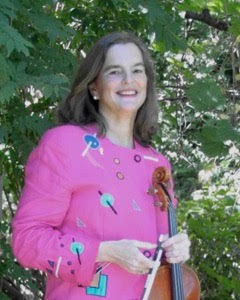Guest post by Penny Brill
 Penny Brill is an alumna of the Community Engagement Training offered by ArtsEngaged. Here she advocates for musicians to participate in community engagement efforts. As she points out at the end of her essay, however, this work is not for all artists. In addition, for a variety of reasons arts organizations should not insist that artists participate in or lead community engagement efforts. (Let (Make) the Artists Do It (?)) The onus for commitment to and efforts in engagement must rest with arts organizations. Partnered with artists dedicated to and trained in engagement, their efforts can yield great results.
Penny Brill is an alumna of the Community Engagement Training offered by ArtsEngaged. Here she advocates for musicians to participate in community engagement efforts. As she points out at the end of her essay, however, this work is not for all artists. In addition, for a variety of reasons arts organizations should not insist that artists participate in or lead community engagement efforts. (Let (Make) the Artists Do It (?)) The onus for commitment to and efforts in engagement must rest with arts organizations. Partnered with artists dedicated to and trained in engagement, their efforts can yield great results.
An Orchestral Musician’s View of Community Engagement
Over the last twenty years I have played for children and adults with special needs, dementia patients, hospitalized children, grieving parents, and veterans in rehab or hospice. The number of musicians ranged from one to a hundred players. Audiences varied from ten people to thirty-five thousand. Some events were onetime only. Some were a series of interactions over a period of months.
Each interaction, no matter the scale, has the potential to improve our connection to each other, to reveal how our differences can be strengths and to reaffirm our common humanity. Ideally we all grow from these experiences.
In a time of divisiveness, heightened awareness of inequalities, and lack of diversity, we as orchestral musicians have an opportunity as individuals, as part of small music ensembles, and as part of the full orchestra to collaborate with others in making a significant contribution toward positive change in our communities.
We can begin by asking” How can we help?” With the resources we have available in the form of contacts, visibility, and musical skills, how can we support pressing needs in the community? Can we collaborate in ways that will optimize use of our respective areas of expertise?
Our first step in answering that question is to go out into the community, out of our usual pathways, to observe and listen. We see the urgent issues that a neighborhood faces, and look for ways to be supportive. What does connection or engagement look like? Below are four recent examples, ranging from one musician up to a large ensemble. While interactions utilizing Individual musicians involve the greatest learning curve and adjustments, each of these four settings require some modification of the orchestral musician’s role.
Example 1: Twenty years ago I first started playing for patients and their families in the radiation oncology waiting area of a local hospital and under the guidance of a music therapist in the transplant area of another hospital. In addition to acquiring and learning a large amount of music I didn’t previously know, I observed that:
- The people in the waiting area weren’t talking to anyone before I played, but began to talk to each other afterward.
- Some wanted to share their stories, and playing music was the start of that conversation.
- They were listening to my sound and musical intention, not how I played technically.
- When I was teamed with the music therapist I was more effective at picking the right music and aiding the patient or family than when working alone. I could support and enhance what the music therapist was doing. I could see that playing and interacting in those settings completely changed the atmosphere from one of isolation and anxiety to one of connection and relief.
Example 2: Just this week a staff member and I interacted with a group of fifteen Alzheimer study members. They sang rounds, moved to music, and practiced deep breathing using some methods we adapted from the teachings of former Pittsburgh Symphony Orchestra principal tubist Arnold Jacobs. By the end of the session the participants were visibly more relaxed and interacted with or were more aware of each other. Through connection and engagement with us, our interaction helped them with the social, cognitive, physical and artistic goals of the program.
[Next week, Ms. Brill will provide more examples as well as advice about the role musicians can (and perhaps should not) play in this work.]
Listen. Connect. Engage.
Penny Brill
Penny Brill is a graduate of Smith College and the Juilliard School and has been a member of the Pittsburgh Symphony Orchestra’s viola section since 1980. Previously, she taught at the Oberlin Conservatory for two years and played viola for one season with the Buffalo Philharmonic. Ms. Brill was part of the AW Mellon Orchestra Forum as well as the Mellon Task Force, both of which were looking at the future direction of orchestras. She is the former Treasurer of the International Conference of Symphony and Opera Musicians (ICSOM) and chaired the Pittsburgh Symphony Orchestra Committee. She is currently on the Board of U.N.-affiliated Music as a Global Resource, as well as the International Association of Music and Medicine (IAMM).

Penny, how pleased I was to read your piece on community involvement. It is excellent.
Nice to know you.
Dick Simmons